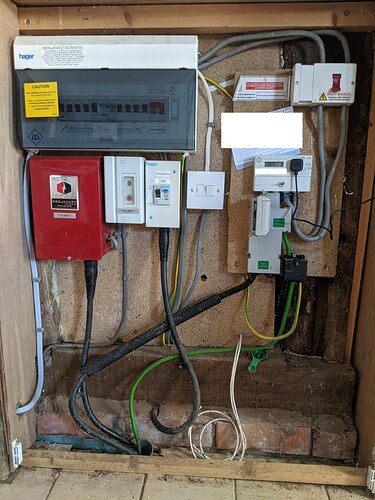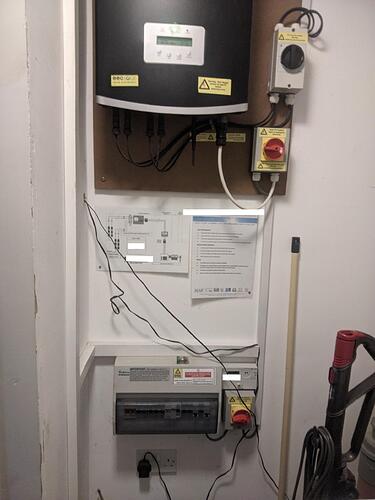You’ve left me guessing here:
What have you put where? You mention getting the emonTx later, so have you put the emonPi in the annex? and do you want to know the overall import/export in advance of getting the emonTx?
If you’re measuring voltage and current and using both of those in the emonPi or both in the emonTx, you can measure the direction of power flow. If you multiply voltage and current anywhere else (i.e. in emonCMS to get apparent power), you don’t know the direction of power flow. So what you need to do is draw yourself a simple single-line diagram showing your main incoming feed, your main C.U, where all your house loads are connected, where the annex feed goes from and where it arrives in the annex, and repeat for the annex, especially showing the PV infeed. If you only want the annex consumption, you can measure it that end - you’re in effect doing a standard PV installation but you’re treating the annex as a “whole house”.
Then when you get the emonTx, you’ll set up the whole house much the same but treat the annex feed as if it were just the PV in terms of measuring (except you won’t need to measure it again in the house - you already have that in the annex), and you’ll do the sums in emonCMS to give you the individual or total consumption values to want.
But if, in the interim, you want the emonPi in the annex to measure the main incoming power at the meter, then yes, you do need to press a spare pair (of Ethernet/phone) into service for the c.t. Remember, the c.t. is a current source so unless you have a stupid voltage drop (at the 50 mA max that it generates) you don’t lose signal, a current source will generate whatever voltage it takes within its power rating to force the current.
I wouldn’t try pulling too hard. If it’s only temporary until you get the emonTx, I’d check the spare wires are unused, and if they are and they have continuity, use them. If there’s 25 m of wire, and it’s CAT 5, then the loop resistance is under 5 Ω (c.f. a 22 Ω burden) and standard 'phone wiring is much the same, so it’s adding 25% to the power the c.t. needs to provide - not something I’d worry about unless you’re running 25 kW loads!
If there is a hard-wired phone circuit in the same cable, you might get a bit of hum on the phone, because you’re only supposed to send -10 dBm (at 600 Ω), that’s about 250 mV. But even that represents a 4 kW load that the c.t. is measuring, so I don’t expect a problem.


 I will get an emonTX at a later date.
I will get an emonTX at a later date.

